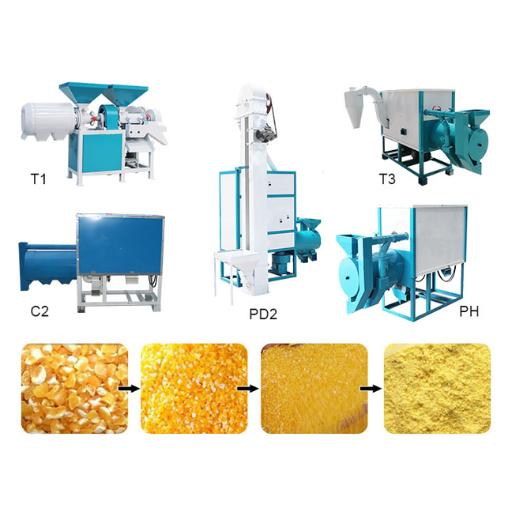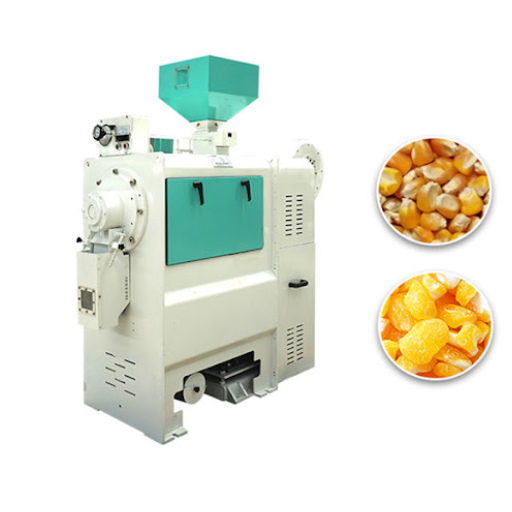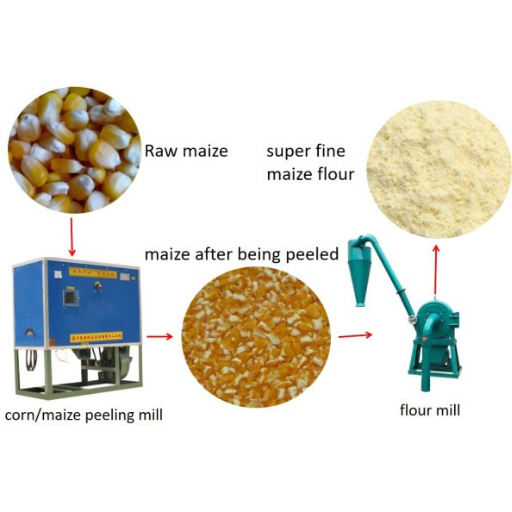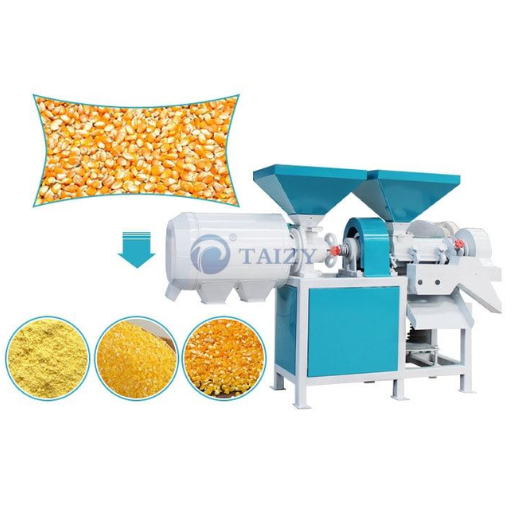As agricultural methods evolve and refine, the process of steam flaking corn stands out as a pivotal innovation in livestock nutrition and feeding efficiency. This blog post delves deep into the intricate world of steam-flaked corn processing, where the integration of art and science results in enhanced feed quality. The journey begins with an exploration of the mechanics behind flaking and milling – two fundamental operations that transform raw corn into a highly digestible and nutritionally superior product. We will examine the precise balance required in this process, highlighting the technological advancements and expertise that drive excellence in steam flaked corn production. Whether you are versed in agricultural sciences or are new to the concept of steam flaking, this introduction offers a solid framework to understand the transformative impact on feeding practices within the livestock industry.
What is the Flake and Steam Flaked Corn Process?

The flake and steam flaked corn process involves a series of steps designed to enhance the nutritional value and digestibility of corn for livestock. Initially, whole corn kernels are conditioned through the application of steam. This steaming softens the kernels, preparing them for the flaking process. Post steaming, the softened kernels are passed through large rollers that flatten them into thin flakes. The rolling process increases the surface area of the corn, which aids in better digestion and nutrient absorption by animals. This technique not only increases the energy availability in the feed but also improves feed efficiency, hence benefiting livestock performance. The precision of this process lies in maintaining the optimal temperature and moisture levels to ensure the highest quality of steam flaked corn.
Understanding the Role of Steam in Corn Processing
Steam plays a crucial role in corn processing, serving multiple functions to boost the quality and efficiency of the product. By applying steam, processors soften the corn kernels, which aids in rolling them into thin, digestible flakes. Heated steam not only helps in softening but also initiates partial starch gelatinization, which enhances nutrient absorption by livestock. This process requires precise temperature control to ensure kernels reach the desired consistency without becoming overly moist or dry, which could diminish nutritional value. Moreover, the use of steam enhances the palatability of the corn, making it more appealing and beneficial for animal consumption. Overall, steam is central in creating a homogenous, high-quality feed product that supports optimal livestock performance.
How Steam Flaked Corn is Produced
The production of steam flaked corn consists of an array of processes aimed at improving livestock’s feed. Initially, the corn kernels cleaning takes place in order to remove foreign material. After that, the cleaned and dried kernels are placed into the conditioning chamber and are treated with steam. This softens the kernel and partially gelatinizes the starch which improves digestibility. Such treated kernels, once soft, are then passed between large rollers to produce thin flakes. The purpose of doing this is to enhance the surface area of kernels which would ultimately lead to more efficient nutrient absorption. After rolling, these flakes are then dried to reach a certain percentage of moisture content for preservation purposes.(Recommended: Corn Flakes Production Line)
How Does Steam Flaked Corn Affect the Performance of Feedlot Cattle?

The use of steam flaked corn in the diet of feedlot cattle can significantly enhance their performance in various ways. The flaking process increases the digestibility of starch, which in turn improves the energy utilization in cattle. This increased digestibility leads to improved average daily gain and feed conversion ratios, contributing to more efficient weight gain. Moreover, the enhanced nutrient absorption from steam flaked corn supports better overall health and productivity in cattle, reducing the time needed to reach market weight. Additionally, it can bolster carcass quality by promoting more consistent marbling and lean mass accumulation. Steam flaked corn thus represents a valuable nutritional improvement in cattle feed, optimizing livestock growth and performance.
Enhancing Animal Nutrition with Flaked Corn
Flaked corn significantly enhances animal nutrition by improving starch digestibility and nutrient absorption. The flaking process breaks down starch granules, boosting energy availability and promoting efficient feed conversion. As a result, animals experience better daily weight gain and health. This nutritional advancement reduces feed costs and shortens time to market, making flaked corn a crucial component in livestock diets for maximizing performance and efficiency.
What are the Quality Standards for Steam Flaked Corn?

The quality standards for steam flaked corn are defined by several key parameters. Firstly, moisture content must be precisely controlled, typically around 18-20%, to ensure optimal gelatinization. Flake density is another critical standard, with a recommended range of 24-28 pounds per bushel to maintain nutritional efficacy and feed efficiency. Uniform flake size is essential, with consistent thickness aiding in predictable starch digestibility. Additionally, the corn should be free from contaminants and impurities, ensuring the highest quality end product. Adhering to these quality benchmarks ensures steam flaked corn effectively enhances livestock nutrition and performance.
Key Characteristics of Steam-Flaked Corn
Steam-flaked corn offers enhanced starch digestibility, making it a vital feed ingredient. The process involves steaming whole corn kernels, which then pass through rollers to form thin flakes. This method increases the surface area, allowing for quicker digestion and utilization of nutrients, thereby boosting energy efficiency. Flaked corn typically has a moisture content of 18-20% and a preferred flake density of 24-28 pounds per bushel, ensuring consistent feed quality. The size and thickness of the flakes are crucial for uniform starch availability. By adhering to rigorous standards and maintaining purity, steam-flaked corn effectively supports the health and growth performance of livestock.
How Do Processing Mechanics Influence Corn Starch?

Processing mechanics play a critical role in influencing corn starch characteristics, primarily through modifications in the physical structure of the corn kernel. The process begins with proper hydration, which softens the kernel, making it more amenable to flaking. By controlling steam temperature and duration, processors alter the gelatinization of starch, a key determinant in digestibility. The rolling process further modifies this structure, increasing surface area and enhancing enzyme accessibility during digestion. Precision in mechanical operations, such as the roller gap settings, directly impacts flake uniformity and, consequently, starch solubility. By optimizing these mechanical aspects, we can significantly enhance the nutritional efficacy of the starch, ensuring energy is readily available for livestock growth and productivity.
The Role of Roller Mill and Milling Machine
Roller mills and milling machines are essential for transforming corn into easily digestible feed. They adjust kernel texture, enhancing energy availability for livestock. Roller mills crush and flatten corn kernels into thin flakes, streamlining starch digestion. The precision of roller settings significantly impacts flakes’ uniformity and starch solubility. Milling machines further refine the corn particles, optimizing size for maximum digestibility. Proper equipment calibration and maintenance ensure consistent output, improving nutritional quality and livestock growth. Through these machines, processors efficiently convert corn into a high-energy feed source, vital for animal productivity.
Impact on Starch Gelatinization and Starch Granules
When I optimize the milling process, I increase starch gelatinization by adjusting temperature and moisture levels. This enhances digestibility, as more extensive gelatinization means enzymes can break down the starch more efficiently. I also maintain tight control over flake thickness and uniformity using precise roller settings. This ensures that starch granules are adequately disrupted, making them more accessible during digestion. By focusing on these key factors, I improve the overall effectiveness of the feed, thereby boosting energy availability and promoting better livestock growth.
Why is Steam Flaked Corn Essential for Feedlot Operations?

Steam flaked corn is essential for feedlot operations due to its enhanced digestibility and energy availability. The steam flaking process disrupts starch granules, increasing their accessibility during digestion and improving feed efficiency. This improved digestibility allows for greater nutrient absorption, leading to better weight gain and overall livestock productivity. Additionally, steam-flaked corn helps maintain consistent feed texture and quality, which is crucial for optimizing dry matter intake and promoting steady growth rates in feedlot animals. By providing a reliable, high-energy feed source, steam flaked corn supports healthier, more efficient feedlot operations.
Enhancing Energy Availability of Flaked Corn
To enhance the energy availability of flaked corn, focus on optimizing the steam flaking process. By precisely controlling steam application and flaker roll settings, I can break down starch granules effectively, boosting their digestibility. Maintaining ideal moisture levels pre-flaking and adjusting the flaking time can increase starch gelatinization, further enhancing nutrient absorption. Regularly calibrating equipment ensures consistent particle size, optimizing feed utilization and energy yield. These practices lead to improved growth rates and feed efficiency, directly impacting livestock performance in feedlot operations.
Boosting Cattle Performance with Flaked Grain
Flaked grain significantly boosts cattle performance by enhancing nutrient absorption and feed efficiency. The steam flaking process increases starch gelatinization, making nutrients more accessible for digestion. This results in improved weight gain, healthier cattle, and superior feed conversion ratios. Effective flaked grain processing involves controlling moisture and optimizing flaker roll settings to ensure consistency and maximize energy availability. Implementing these practices leads to better dry matter intake and accelerated growth rates, which are crucial for achieving optimal cattle performance in feedlot operations.
Improving the Value of Steam-Flaked Corn in Feedlot Diets
To improve the value of steam-flaked corn in feedlot diets, I focus on precise steam flaking techniques. By controlling the moisture content and optimizing flaker settings, I boost starch digestibility, leading to better weight gain and feed efficiency. Regular equipment calibration keeps flake consistency high, maximizing energy availability. These practices foster healthier cattle and superior growth rates, making steam-flaked corn a valuable component of livestock diets. Taking cues from leading industry sources, these strategies are effective in enhancing the overall performance of feedlot cattle.
References
-
Five Tips for Making High Quality Flaked Corn for Cattle – Offers insights into the steam flaking process and its benefits for cattle feed.
-
Flaking corn: processing mechanics, quality standards, and … – Discusses critical production factors that influence the quality of steam-flaked corn.
-
Effects of corn grain processing method (ground versus …) – Compares steam-flaked corn with ground corn in terms of feed efficiency and ruminal fermentation.
Frequently Asked Questions (FAQ)
Q: What is the significance of grain processing in steam flaked corn production?
A: Grain processing in steam flaked corn production is crucial for enhancing the starch availability of steam-flaked corn, which improves the digestion and energy efficiency for beef cattle. It involves precise control of factors like steam chest temperature and flake density to maximize the nutritional value of corn.
Q: How does steam flaking increase the value of corn for beef cattle?
A: Steam flaking increases the value of corn for beef cattle by improving the digestibility and nutrient absorption of the corn. The process alters the degree of starch retrogradation, making it easier for the rumen to break down the starch, thus providing more energy to the cattle.
Q: What role does the steam chest play in the corn processing method?
A: The steam chest plays a vital role in the corn processing method by providing the necessary heat and moisture to soften the corn kernels. This step is critical in preparing the corn for flaking, ensuring that the degree of starch gelatinization is optimal for processing.
Q: How does increasing flake density affect the starch retrogradation of steam-flaked corn?
A: Increasing flake density can influence the starch retrogradation of steam-flaked corn by compacting the starch granules, which may slow down the retrogradation process. This affects the starch availability and the overall nutritional profile of the flaked corn as compared with ground corn.
Q: Why is the degree of starch retrogradation important in flaked corn processing?
A: The degree of starch retrogradation is important because it affects the digestibility and energy release of the starch in the rumen. Proper control of retrogradation can enhance the matter disappearance of steam-flaked corn, optimizing its use in beef cattle diets.
Q: What happens if corn processing fails to account for the influence of flake density?
A: If corn processing fails to account for the influence of flake density, it may result in flaked corn by failing to provide the desired nutritional benefits. This can lead to inefficiencies in feeding and reduced performance in beef cattle due to suboptimal starch availability.
Q: How does steam flaked corn compare with ground corn in terms of nutritional benefits?
A: Steam flaked corn generally offers superior nutritional benefits compared with ground corn, as it has a higher starch availability due to the processing method. This results in better energy efficiency and feed conversion in beef cattle, enhancing their growth and productivity.
Q: What is the impact of neutral detergent fiber on the processing industry?
A: Neutral detergent fiber is an important consideration in the processing industry as it affects the digestibility and overall nutritional balance of feed products. In steam flaked corn processing, managing fiber levels can influence the efficiency of feed utilization by beef cattle.
Q: How does the flour milling process differ from steam flaking in corn processing?
A: The flour milling process differs from steam flaking in that it primarily focuses on grinding and separating the corn into various components like flour and bran, while steam flaking involves conditioning the whole kernel with steam and then rolling it to enhance starch availability for animal feed.









